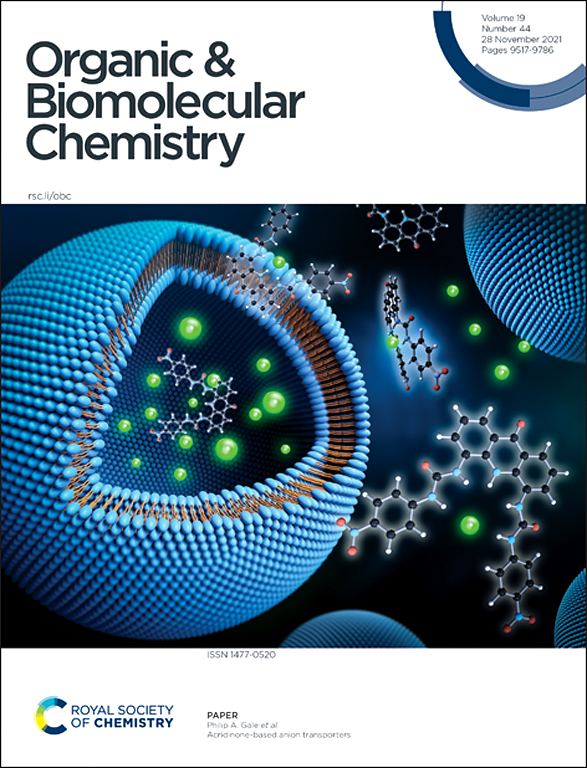钯催化芳基羧酸 2-吡啶酯与末端炔的交叉偶联。
IF 2.7
3区 化学
Q1 CHEMISTRY, ORGANIC
引用次数: 0
摘要
在 Na2CO3 的存在下,PdCl2(dppf)、dppp 和 CuI 可催化芳基羧酸 2-吡啶酯与末端炔烃的脱羰基偶联反应,生成 1,2-二取代炔烃。(异)芳基、烷基和硅基乙炔以及各种供电子和吸电子基团取代的芳基羧酸 2-吡啶酯均可用于这种转化,并显示出一系列官能团的兼容性。本文章由计算机程序翻译,如有差异,请以英文原文为准。

Palladium-catalyzed cross-coupling of arylcarboxylic acid 2-pyridyl esters with terminal alkynes†
In the presence of Na2CO3, the combination of PdCl2(dppf), dppp and CuI catalyzes the decarbonylative coupling of arylcarboxylic acid 2-pyridyl esters with terminal alkynes to afford 1,2-disubstituted acetylenes. (Hetero)aryl, alkyl, and silylacetylenes and various electron-donating and -withdrawing group-substituted arylcarboxylic acid 2-pyridyl esters can be used in this transformation, with a range of functional groups showing compatibility.
求助全文
通过发布文献求助,成功后即可免费获取论文全文。
去求助
来源期刊

Organic & Biomolecular Chemistry
化学-有机化学
CiteScore
5.50
自引率
9.40%
发文量
1056
审稿时长
1.3 months
期刊介绍:
Organic & Biomolecular Chemistry is an international journal using integrated research in chemistry-organic chemistry. Founded in 2003 by the Royal Society of Chemistry, the journal is published in Semimonthly issues and has been indexed by SCIE, a leading international database. The journal focuses on the key research and cutting-edge progress in the field of chemistry-organic chemistry, publishes and reports the research results in this field in a timely manner, and is committed to becoming a window and platform for rapid academic exchanges among peers in this field. The journal's impact factor in 2023 is 2.9, and its CiteScore is 5.5.
 求助内容:
求助内容: 应助结果提醒方式:
应助结果提醒方式:


